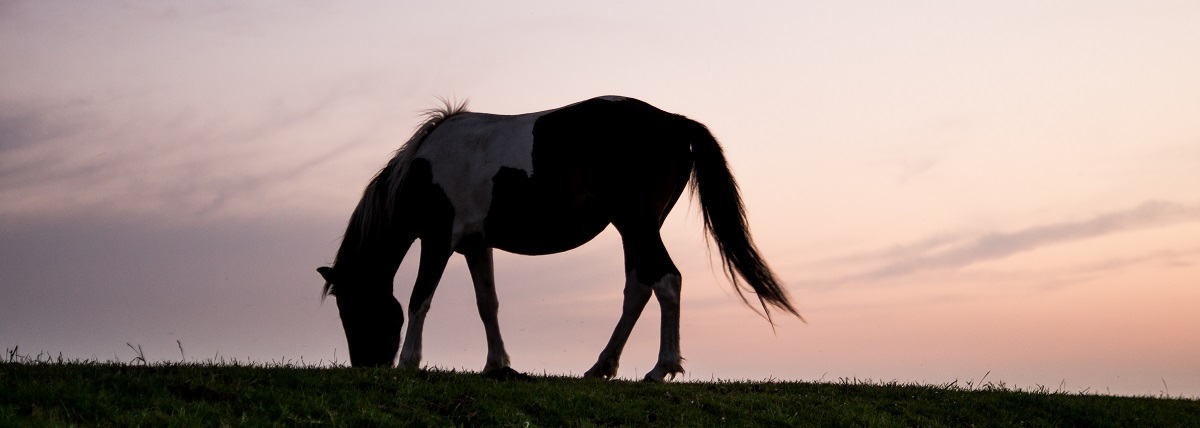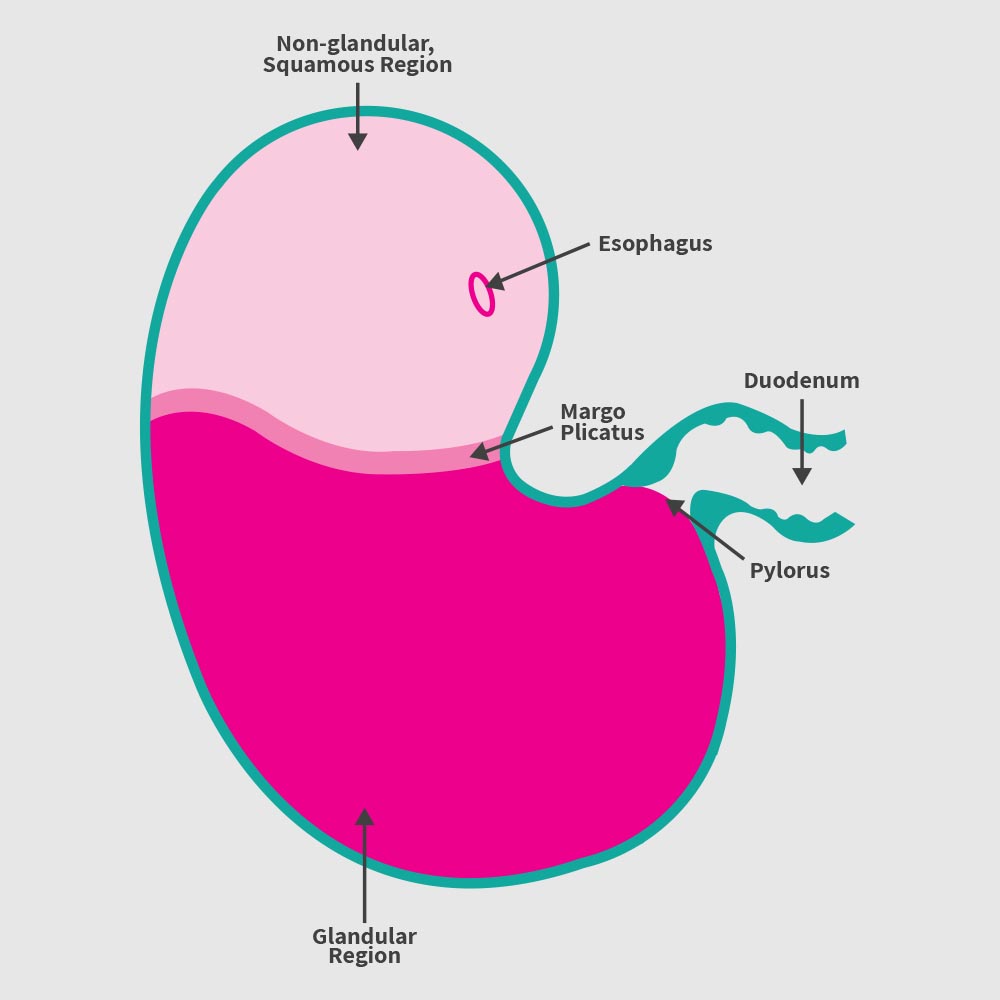
Up to 1 in 3 horses suffer from equine gastric ulcer syndrome (EGUS). Here we talk about what they are, and how we deal with them.
WHAT ARE THEY
Gastric Ulcers form when the horses stomach lining has been eroded due to prolonged exposure to acid produced in the stomach. Ulcers range in severity from grade 0 (reddening and slight inflammation) to grade 4 (extensive deep ulceration with profound bleeding)
HOW DO THEY DEVELOP
To understand how ulcers develop it is first beneficial to have a little knowledge of the anatomy of the horse’s stomach. The horses stomach is divided into two parts; the upper third called the squamous fundus, and the lower two thirds called the glandular fundus. As their names suggest, the squamous fundus is covered by a squamous epithelium, with the lower glandular fundus being covered in glandular epithelium. The acidic stomach contents are produced in the lower glandular fundus.
Commonly we see ulcers in the upper squamous fundus, as a result of the acidic contents coming into contact with the delicate squamous stomach lining.
Horses naturally graze for 16 hours a day, and this helps prevent against ulcers in a twofold manner;
- The acidity of the stomach contents is reduced by forage passing through the stomach and by the bicarbonate that is produced through chewing.
- The forage creates a physical “mat’ which sits at the top of the stomach and protects the upper lining from acid splashing up.

HOW DO THEY GET THEM
The most common type of ulcer we see are squamous ulcers, and these develop from acidic stomach contents eroding the epithelium. Horses become prone to ulcers through a number of husbandry systems common in today’s management.
- Diet
Horses are designed to be trickle feeders and normally eat for 16 hours a day. They have a continuous secretion of acid into the stomach, so without food to neutralise it ulcers can rapidly form.
Feeding concentrates rather than roughage also contributes as a risk factor, as horses spend less time eating.
- Housing
When kept stabled for large portions of time the amount of time the horse spends foraging is dramatically reduced. Stabling can also cause a physiological stress which can reduce food intake.
- Intensive Exercise
Blood flow to the stomach (which helps reduce acid) reduces in exercise. Exercise also causes compression on the stomach which can physically push the acid contents up onto the squamous lining.
- Medication
Some long term medications can inhibit production of substances that help protect the stomach. This mainly effects the glandular tissue.
- Stress
Physical stress, illness and physiological stress can all predispose a horse to developing ulcers. Transport and stabling are proven factors in causing ulcers.
HOW DO I KNOW IF MY HORSE HAS ULCERS
The only way to truly diagnose ulcers is by gastroscopy – the passing of a camera into the stomach to visualise the stomach lining.
However, there are many clinical signs which can indicate ulcers may be an issue, such as;
- Weight loss
- Poor Performance
- Dull coat
- Reacts badly to being girthed
- Attitude change – more ‘grumpy’
- Reduced appetite
- Colic
HOW DO I TREAT
Your vet will be able to grade any ulcers and come up with an action plan. Typically treatment is a course of Omeprazole.
HOW DO I PREVENT
The best way to prevent ulcers in by instilling husbandry changes that mimic as natural a life as possible for the horse;
- Ensure it has access to lots of good quality roughage throughout the day
- Try to enable plenty of time out at pasture
- If stabled, try and place feed in multiple locations to encourage foraging
- Reduce levels of grains and concentrates in the diet
- Feed chaff before exercise to create a physical ‘fibre mat’ barrier at the top of the stomach and improve blood supply to the stomach
- Avoid over training
- Reduce stress where at all possible
